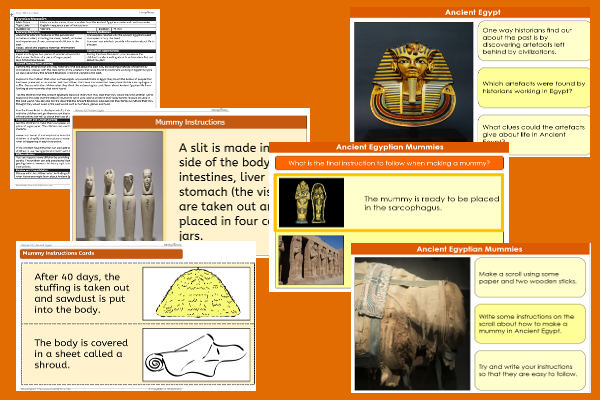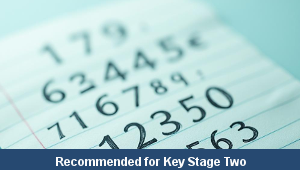Lesson One – Egyptian Mummies

This history teaching pack for Key Stage Two gets the children to investigate how to select and write a set of matching instructions to explain and record how the Ancient Egyptians made and used mummies in the past.
The class can describe how historians can use artefacts to explore what happened in the past civilizations to understand about ancient beliefs and practices.
Download this teaching pack including a lesson plan, classroom activities and an interactive presentation to investigate how to select and write a set of matching instructions to explain and record how the Ancient Egyptians made and used mummies in the past
Activities in this teaching pack include display posters to explain how to sequence a set of instructions about making an Egyptian mummy and a set of cards to practise sequencing a set of instructions about how mummies were produced and used in the Ancient Egyptian civilization.
The interactive presentation can be used to explore how to write a set of instructions to explain how the Ancient Egyptians made and used mummies in the past.
This lesson is part of a history scheme of work to get the children to explore how and why the Ancient Egyptians constructed and used different pyramids and tombs to reflect their beliefs about the afterlife. There are teaching activities for shared learning, differentiated worksheets to support independent learning and interactive presentations to introduce concepts and key skills.
-

Maths Arithmetic Assessment
Assess abilities in solving arithmetic number problems for addition, subtraction, multiplication and division when working with informal and formal written calculations
-

Environment
Identify and describe some of the special landscapes and locations that can be found in the world and reflect on how they can be protected and preserved for the future
-

Silent Letter Words
Explore and illustrate the meanings and spellings of some different words with silent letters when using them in a range of topics and scenarios
-

Complaint Letters
Explain and model how to format and structure writing when composing letters of complaint about different issues and scenarios
